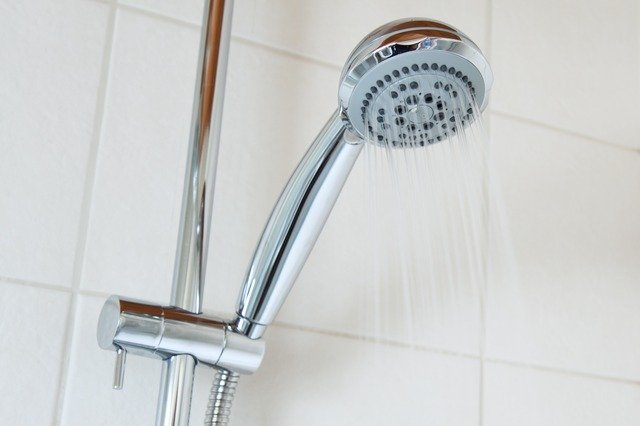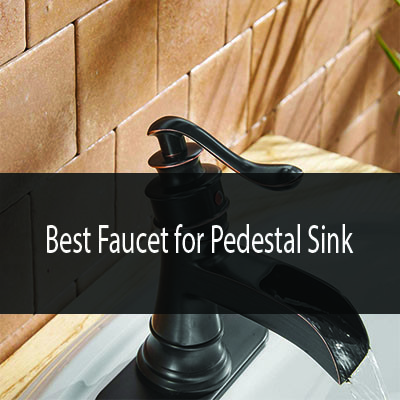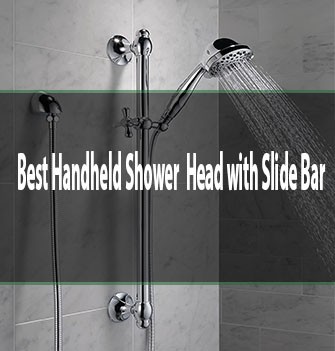When it comes to achieving soft, radiant skin, one of the simplest yet most effective tools at your disposal is a bath sponge. But what type of bath sponge is best for exfoliation? This question is crucial for anyone looking to enhance their bathing routine, and it’s one I’ve pondered and researched extensively. As someone who has explored various exfoliation methods, I can assure you that the right sponge can transform your skin care regimen, making it smoother and more vibrant.
In this comprehensive guide, I will delve into the different types of bath sponges available for exfoliation, their benefits, and how to choose the one that suits your skin type best. Whether you're a skincare novice or a seasoned enthusiast, you will find valuable insights to help you make informed decisions. So, let’s get started!

Source: ecotools.com
Table of Contents
Understanding Exfoliation and Its Importance
Before we jump into the types of bath sponges, let’s talk about exfoliation. Exfoliation is the process of removing dead skin cells from the surface of your skin. This practice is essential for several reasons:
- Promotes Cell Turnover: Regular exfoliation encourages the growth of new skin cells, which helps maintain a youthful appearance.
- Improves Skin Texture: By removing dead skin, exfoliation reveals smoother, softer skin underneath.
- Enhances Absorption: Exfoliating prepares your skin to better absorb moisturizers and other skincare products.
- Reduces Breakouts: By keeping pores clear of debris, exfoliation can help prevent acne and blemishes.
Given these benefits, selecting the right bath sponge for exfoliation becomes vital. Let’s explore the various options available.
Types of Bath Sponges for Exfoliation
1. Natural Sea Sponges
Natural sea sponges are harvested from the ocean and are known for their unique texture and softness. They are biodegradable and environmentally friendly, making them a popular choice among eco-conscious consumers.
Key Features:
- Soft and gentle on the skin
- Naturally absorbent
- Biodegradable and sustainable
Pros:
- Excellent for sensitive skin
- Luxurious feel during use
- Long-lasting with proper care
Cons:
- Can be more expensive than synthetic options
- Requires regular cleaning to prevent bacteria buildup
Ideal Users: Those with sensitive skin or individuals looking for eco-friendly options.
2. Loofah Sponges
Loofah sponges are made from the fibrous interior of the loofah plant. They are widely recognized for their exfoliating properties and are often used in scrubs and body washes.
Key Features:
- Firm texture for effective exfoliation
- Can be used wet or dry
- Inexpensive and widely available
Pros:
- Great for removing dead skin cells
- Can improve circulation with regular use
- Affordable and accessible
Cons:
- May be too harsh for sensitive skin
- Requires thorough cleaning to avoid mold
Ideal Users: Individuals looking for a budget-friendly exfoliation option.
3. Konjac Sponges
Konjac sponges are made from the konjac plant, a natural, biodegradable material. These sponges are becoming increasingly popular due to their gentle exfoliating properties.
Key Features:
- Soft and gentle, even for sensitive skin
- Can be infused with various ingredients (like charcoal or clay) for added benefits
- Biodegradable and environmentally friendly
Pros:
- Ideal for delicate skin types
- Provides a gentle cleanse while exfoliating
- Versatile with various formulations available
Cons:
- May not provide enough exfoliation for very dry or rough skin
- Requires proper drying to maintain shape
Ideal Users: Those with sensitive or dry skin looking for a gentle exfoliation solution.
4. Synthetic Bath Sponges
Synthetic sponges, often made from materials like polyester or nylon, are designed for durability and ease of use. They come in various textures, from soft to coarse, catering to different skin types.
Key Features:
- Variety of textures for different exfoliation levels
- Durable and long-lasting
- Easy to clean and maintain
Pros:
- Affordable and widely available
- Can be used for both exfoliation and cleansing
- Less prone to bacteria buildup compared to natural sponges
Cons:
- May not be as environmentally friendly
- Some may find them less luxurious than natural options
Ideal Users: Those looking for a versatile, easy-to-maintain exfoliation tool.
5. Pumice Stones
While not a sponge in the traditional sense, pumice stones are excellent for exfoliating rough areas like elbows and feet. They are volcanic rocks that are porous and abrasive.
Key Features:
- Very coarse texture for heavy-duty exfoliation
- Ideal for calloused areas
- Lightweight and portable
Pros:
- Highly effective for tough skin
- Inexpensive and easy to find
- Can help prevent foot problems
Cons:
- Not suitable for sensitive or delicate skin
- Requires proper cleaning to avoid bacteria buildup
Ideal Users: Individuals with rough or calloused skin looking for targeted exfoliation.
Choosing the Right Bath Sponge for Exfoliation
When selecting the best bath sponge for exfoliation, consider the following factors:
- Skin Type: If you have sensitive skin, opt for softer sponges like konjac or natural sea sponges. For tougher skin, loofahs or pumice stones may be more effective.
- Exfoliation Level: Determine how much exfoliation you need. If you’re looking for a gentle cleanse, choose a softer sponge. For deeper exfoliation, consider firmer options.
- Environmental Impact: If sustainability is important to you, lean towards natural sponges or konjac sponges.
- Maintenance: Consider how much time you’re willing to invest in cleaning and maintaining your sponge. Synthetic sponges are generally easier to care for.

Source: www.reddit.com
How to Use a Bath Sponge for Exfoliation
Using a bath sponge for exfoliation is simple, but there are some tips to maximize its effectiveness:
-
Soak the Sponge: Before use, soak your sponge in warm water to soften it. This will make the exfoliation process gentler on your skin.
-
Apply Cleanser: Use your favorite body wash or soap. A gel-based cleanser works best as it lathers well with sponges.
-
Exfoliate Gently: Use circular motions to gently massage the sponge over your skin. Focus on areas that need extra attention, like elbows, knees, and feet.
-
Rinse Thoroughly: After exfoliating, rinse your skin thoroughly to remove any dead skin cells and cleanser.
-
Clean the Sponge: After each use, rinse the sponge well and allow it to dry completely to prevent bacteria growth.
-
Replace Regularly: Depending on the type of sponge, replace it every few weeks to maintain hygiene and effectiveness.
Tips for Exfoliating Safely
Exfoliation is beneficial, but it’s essential to do it safely to avoid skin irritation. Here are some tips:
- Frequency: Exfoliate 1-3 times a week, depending on your skin type. Over-exfoliating can lead to irritation.
- Moisturize Afterwards: Always follow up with a good moisturizer to hydrate your skin after exfoliation.
- Listen to Your Skin: If you notice redness or irritation, reduce the frequency of exfoliation or switch to a gentler sponge.
- Avoid Sun Exposure: Exfoliated skin can be more sensitive to the sun. Always apply sunscreen after exfoliating.

Source: ecotools.com
Common Misconceptions About Exfoliation
Myth 1: Exfoliation is Only for Oily Skin
Many people think exfoliation is only necessary for oily skin types. However, all skin types can benefit from exfoliation, including dry and sensitive skin. The key is to choose the right sponge and frequency.
Myth 2: You Should Exfoliate Daily
Exfoliating daily can actually harm your skin. It’s essential to find a balance that works for your skin type, typically 1-3 times a week.
Myth 3: All Sponges Are the Same
Not all sponges are created equal. Each type of sponge offers different textures and benefits, making it crucial to choose one that suits your specific needs.

Source: www.reddit.com
Frequently Asked Questions about What Type of Bath Sponge is Best for Exfoliation?
1. How often should I exfoliate with a bath sponge?
It’s generally recommended to exfoliate 1-3 times a week, depending on your skin type. Sensitive skin may require less frequent exfoliation.
2. Can I use a bath sponge on my face?
While some sponges, like konjac sponges, are gentle enough for the face, others may be too abrasive. Always choose a sponge specifically designed for facial use.
3. How do I clean my bath sponge?
Rinse your sponge thoroughly after each use, and allow it to dry completely. You can also soak it in a mixture of water and vinegar once a week for deeper cleaning.
4. What should I do if my skin feels irritated after exfoliating?
If your skin feels irritated, reduce the frequency of exfoliation and consider switching to a gentler sponge. Always follow up with a moisturizer.
5. Are natural sponges better than synthetic ones?
Natural sponges are biodegradable and often softer, making them ideal for sensitive skin. However, synthetic sponges are more durable and easier to maintain. The best choice depends on your personal preference and skin type.
:max_bytes(150000):strip_icc()/loofahs-tout-03e638a1c6c24270b68f0395bd9a99ed.jpg)
Source: www.byrdie.com
Conclusion
Finding the right bath sponge for exfoliation can significantly enhance your skincare routine. Whether you opt for a natural sea sponge, a loofah, or a konjac sponge, understanding your skin type and needs will help you make the best choice. By exfoliating regularly and safely, you can achieve smoother, healthier skin that radiates confidence.
I encourage you to explore the different options available and try out a few to see which one works best for you. Remember, taking care of your skin is an investment in yourself. So go ahead, treat yourself to a delightful exfoliation experience!
If you found this guide helpful, consider subscribing for more skincare tips and tricks. And feel free to leave a comment below with your thoughts or questions!






